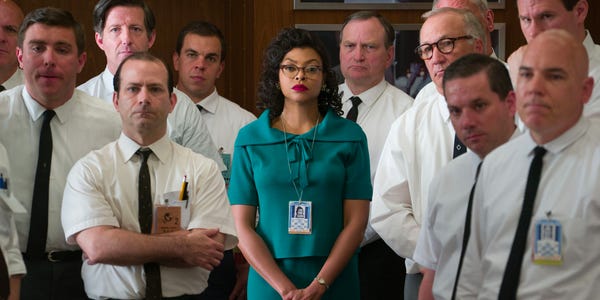
By Emily Doan
A film about three real African-American women who were vital to the success of NASA’s early spaceflights seems a trailblazing narrative, but how much groundbreaking happened in real life?
The contributions of Katherine Johnson, Dorothy Vaughan and Mary Jackson to space exploration may not be as known as those of Alan B. Shepard or John Glenn, but they were not any less boundary-breaking. The movie “Hidden Figures” follows the true story of these three women, who all began their journey working at NASA as a part of the West Computers, a segregated group of African-American women hired to process aeronautic data in the Space Race era.
Actress Octavia Spencer played Vaughan, a retired mathematics teacher, who started working at the Langley Memorial Aeronautical Laboratory in 1943 as a temporary war job. This eventually led her to become the first African-American female supervisor in NASA history in 1949.
Portrayed by actress Janelle Monáe, Jackson began her journey at NASA in 1951 when she joined the West Computers under the supervision of Vaughan. Just two years later, Jackson received an opportunity to pursue her true passion of engineering.
While learning from engineer Kazimierz Czarnecki, he suggested that Jackson join a training program to become an engineer, but to do so, Jackson would have to petition the court to enroll in the courses needed at the previously segregated Hampton High School. She succeeded and went on to become the first black female engineer in 1958, another first for NASA.
Of the three, Johnson, played by actress Taraji P. Henson, is most recognized for her remarkable contributions to NASA, specifically the use of her calculations in John Glenn’s 1962 orbital mission, which the plot of “Hidden Figures” is centered around. She was vital to several other monumental projects, including her calculations that helped synchronize Project Apollo’s Lunar Module with the lunar-orbiting Command and Service Module. Former President Barack Obama awarded Johnson the Presidential Medal of Freedom in 2015
All of these women, including the unnamed women from the West Area Computing Group, not only provided key resources to NASA, allowing for national advancement in space exploration but did so while having to fight for human rights.
Their pioneering legacy didn’t become known until the release of the movie “Hidden Figures” in 2016.
Although “Hidden Figures” is praised for its diversity and female and Black empowerment in the movie and in real life, it has been criticized for its whitewashing by film director Theodore Melfi.
In one of the most dramatic scenes of the film, Johnson’s white boss becomes aware of her having to run back and forth to her old building to use the “Colored” bathroom since there wasn’t one in the new one. Her boss, portrayed by Kevin Costner, then picks up a crowbar, goes to the bathroom and proceeds to smash the “Colored Ladies Room” sign as an act to renounce racism.
In reality, this heartwarming scene never happened and was just a way for Melfi to reassure the audience that “white people who do the right thing” exist.
Despite his seemingly positive intentions, Melfi created a scenario with the sole purpose of making a “white savior” look good, diminishing the actual achievements made by Johnson. In real life, Johnson used the white bathrooms along with everyone else and was never questioned for it. This is just one example of filmmakers shielding white viewers from the racist reality of, in this case, the space program.
The true story of “Hidden Figures” is incredibly empowering, especially for women of color who often have to fight twice as hard for their seats at the table. Even with the use of the common white hero narrative, it doesn’t diminish the pure inspirations of Johnson, Vaughan and Jackson.





